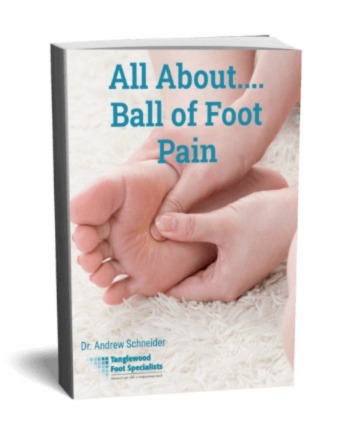You’ve likely heard of CBD, but are you familiar with CBG? Well, these two cannabinoids can help with foot and ankle pain. When applied topically, they interact with your skin’s endocannabinoid system, finding receptors to reduce inflammation and discomfort.
On a deeper level, CBD boosts your body’s endocannabinoids, while CBG prevents their breakdown. This provides you with targeted relief, not systemic exposure. As such, they provide a unique approach to pain management. Today’s post will explain how to use these cannabinoids in combination to achieve significant pain relief.
What are Topical CBD and CBG?
CBD and CBG are two cannabinoids of more than 100 found in the cannabis plant. But unlike THC, they don’t produce the high associated with marijuana. Instead, they have gained recognition for their many potentially therapeutic benefits.
CBD is known for its anti-inflammatory and pain-relieving properties. It interacts with the body’s CB1 and CB2 receptors to possibly manage both concerns. On the other hand, CBG is less well-studied, but shows promising potential. It’s considered a pre-cursor to other cannabinoids, including CBD and THC, because it’s the first one produced by the plant. Like CBD, CBG also interacts with your ECS. But it seems to have a more direct interaction with your brain, potentially offering neuroprotective benefits.
If you apply them topically, that means applying the cannabinoids directly to the skin. They’re typically mixed with creams, balms and lotions, making them easy to use when targeting localized areas of discomfort. In contrast, when you ingest CBD or CBG oils, they enter your blood stream and could affect your entire body.
Why are Topical CBD and CBG Great for Relieving Foot and Ankle Pain? ![CBD]()
Why are cannabinoids great for specifically targeting foot and ankle pain? Well, it’s all about
the body’s endocannabinoid system (ECS.) This complex cell-signaling system plays an important role in maintaining bodily balance, including pain sensation. Both CBD and CBG interact with the ECS, potentially helping reduce pain and inflammation. And the skin on your feet and ankles is packed with ECS receptors, making these parts perfect for targeting localized pain with cannabinoid-based products.
Importantly, everyone’s body reacts differently to cannabinoids. What works for one might not be as effective for another. As such, individual results will vary with topical CBD and CBG. Still, topical cannabinoids interact with endocannabinoid receptors in the skin, relieving foot and ankle pain in a unique way. The compounds don’t penetrate into your blood stream. Instead, they interact with CB1 and CB2 receptors in your skin, muscles and nerves. And this is what provides the localized relief you’re seeking.
Now, CBD doesn’t bind directly with the receptors. Instead, it boosts the binding efficiency of your body’s own endocannabinoids. And CBG seems to block the natural processes that break down cannabinoids, prolonging their effect in your body.
Cannabinoids and Inflammation
Chronic inflammation in your feet and ankle leads to pain and impacts your quality of life. Both CBD and CBG can inhibit the production of inflammatory molecules such as cytokines and chemokines. In doing so, they help to reduce the swelling, redness and warmth associated with inflammation, relieving your discomfort in the process.
Additionally, CBG seems to block the lipoxygenase enzyme that also plays an essential role in the inflammation process. By inhibiting the enzyme, CBG can further reduce inflammation and pain. Moreover, unlike systemic anti-inflammatory medications that can have side effects, topical CBD and CBG provide targeted relief, right where you need it…without the systemic exposure.
Choosing the Best Topical CBD and CBG for Foot and Ankle Pain
Now, there are a variety of topical creams on the market that can effectively reduce foot and ankle pain. But their effectiveness depends on their absorption rate. You see, the skin on your feet is thicker than it is on the rest of your body. And that can limit a topical cream’s absorption rate. However, some manufacturers will enhance their creams with products that open up your skin, helping it better absorb topical ingredients. Additionally, higher potencies and more frequent applications will enhance the effectiveness of topical cannabinoids. Still, you should always start with smaller doses and gradually increase from there as you see how your body reacts to a new product.
In our office, we use Tolcylen Transdermal CBD and CBG cream. They’ve developed a delivery system that allows the cannabinoids to penetrate deep beneath the skin to the source of your inflammation, allowing for more direct and targeted treatment. It also comes with a metered pump to ensure consistent dosage.
Usage Strategies for Optimal Relief
If you want to get the most out of your topical CBD and CBG, here’s what you need to do.
1. Understand your body and its pain levels. This awareness will guide your dosage and application decisions. Start by applying a small amount of cream, carefully observing its effect. Over time, you can increase the dose—if necessary.
2. Be consistent. If you really want the cumulative benefits of topical CBD and CBG, apply your product daily. You might not notice immediate relief, but don’t get discouraged. It often takes time to experience the full benefit.
3. Consider the CBD and CBG concentration in your product. Higher concentrations often offer more potent effects, but you must monitor your applications more closely. Always check your product’s label for its concentration, and use that information to guide your initial dosage.
4. Remember that everyone’s body is different. What works for someone else may not work for you. It’s imperative to listen to your body and adjust your dosage accordingly. The goal is to find the regimen that produces the maximum relief of your foot and ankle pain.
With patience and careful observation, you’ll find the right balance. But if you need some help with figuring out your application routine? Or if you want to explore non-invasive forms of relief for foot and ankle pain? That’s what we’re here for! Just reach out to the office and request a consultation with Dr. Andrew Schneider, your Houston podiatrist.















